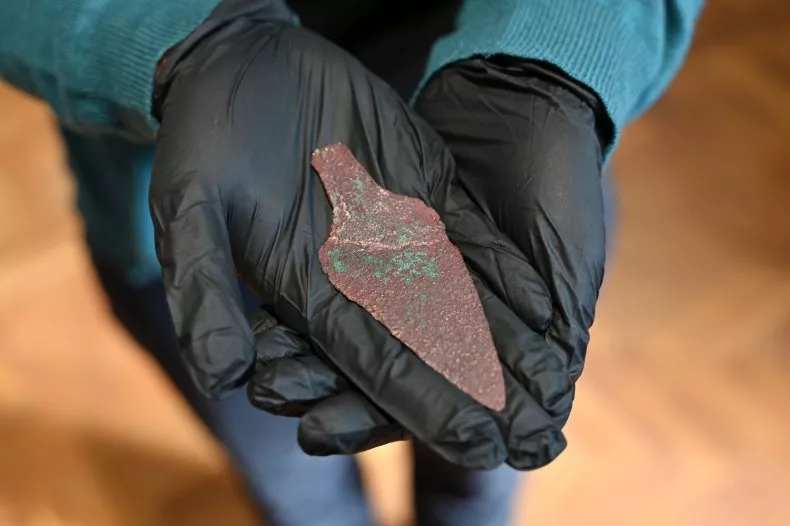An "extremely rare" copper dagger believed to be over 4,000 years old has been unearthed by a metal detectorist in Poland.
Piotr Gorlach stumbled upon the remarkable find while conducting a search with his metal detector in the forests near the village of Korzenica, Subcarpathia Province, situated in the southeast of the country near the Ukrainian border, as reported by the Polish Press Agency.
Gorlach recounted the discovery, stating, "I had finished searching for the day and was on my way back to the car when my detector suddenly signaled. Digging into the forest floor, I uncovered a flat metal object coated with green patina. It quickly became evident that I had stumbled upon something far older than the World War I and II military items I usually search for in the area."
Following the discovery, Gorlach promptly notified archaeologists from the Orsetti House Museum in Jarosław, who conducted a preliminary investigation of the artifact.
Archaeologist Marcin Burghardt from the Jarosław museum dated the dagger to the second half of the 3rd millennium B.C.
Elżbieta Sieradzka-Burghardt, another archaeologist from the same museum, explained to Newsweek that the artifact predates the appearance of bronze items in the region, emphasizing its significance in the transition from the Stone Age to the Bronze Age in southeastern Poland.
The dagger, the only one of its kind ever discovered in Podkarpackie province, is the oldest metal dagger found in the area to date.
Given the rarity of copper items in the 3rd millennium B.C., it is believed that only individuals of the highest social status could afford them. Although the dagger's relatively soft nature suggests it may not have been practical for combat, it likely served as a symbol of prestige and social standing.
While the artifact offers insights into the social hierarchy of the time, its exact origin remains uncertain. However, its features bear similarities to artifacts from the Bell Beaker culture of western and central Europe and the Catacomb culture of eastern Europe and western Asia, offering potential clues to its provenance.







